IGUANAS
 블루 이구아나 |  노 이구아나 |
|---|---|
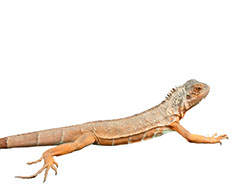 레드 이구아나 | 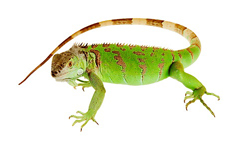 그린이 구 아나 |
이구아나 케어 시트
크기 : 성인 이구아나의 길이 4~6피트 크기가 다양.
수명 : 올바르게 관리하면, 이구아나는 포로에서 20 년 이상을 살아야한다.
일반 외관 : 이구아나는 대부분의 사람들이 생각하면 생각 무엇인가 '도마뱀.' 그들은 각각의 발에 다섯 발가락이있다. 그들은 목 밑에 처진 살라는 턱 아래 피부의 살 플랩을 가지고있다. 모든 이구아나는 뒷면의 길이를 실행하는 쪽이있다. 일반적인 믿음과는 달리, 모든 이구아나는 녹색이다. 대부분의 청소년은 밝은 녹색,하지만 그들은 나이와 성장 그들은 줄무늬 꼬리와 갈색 또는 오렌지에 둔한 녹색에서 색상을 다양합니다.
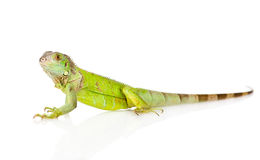
주택 요구 사항
인클로저 : 성인 이구아나의 인클로저는 매우 크다. 인클로저는 약 1 적어도 6 피트 정도의 키에해야
온도 : 이구아나는 열대 기후에서 온 따뜻하게 할 필요가있다. 낮 기온은 80해야한다.
열 / 라이트 : UVA와 UVB를 제공 자외선 조명은 적절한 칼슘 대사와 골격 발달에 필요합니다. 적절한 조명없이 당신의 병이 매우 고통스러운 죽음을 죽을 것이다. 적절한 조명 특별히 또한뿐만 아니라 약간의 열을 제공 할뿐만 아니라, 파충류 수은 전구에 의해 사용하기 위해 만들어진 형광등을 이용하여 제공 될 수있다. 추가 열 적외선 세라믹 방출과 백열등을 녹이는 전구를 이용하여 제공 할 수있다. 뜨거운 바위는 그들이 심각한 이구아나를 구울 수있는 어떤 상황에서도 절대 사용하지 마십시오.

기판 : 이구아나는 종종 혀가 자신의 주변을 핥아 것입니다. 때문에 (나무 부스러기, 뿌리 덮개, 모래, 또는 분말 형)이 가장 미립자 기판의 가장 이구아나에 적합하지 않다. 무독성 잉크, 정육점, 종이 수건, 실내 / 실외 카펫, 또는 인공 잔디와 신문은 모두 훌륭한 선택을. 실내 / 실외 카펫 또는 인공 잔디를 사용하는 경우 당신의 이구아나의 손톱에 얽힌 수없는 매달려 문자열이 없는지 확인하시기 바랍니다. 그것은 또한 당신이 깨끗한 세트로 오염 된 부분을 교체 한 후 깨끗하고 다음 청소를 위해 사용하는 현재의 집합을 소독 할 수 있도록 여러 조각을 가지고하는 것이 좋습니다.
Environment: Iguanas come from a tropical climate and require a humidity level of 65% to 75%. To achieve this may require several misting’s a day. Many people opt to purchase an automatic misting system instead.
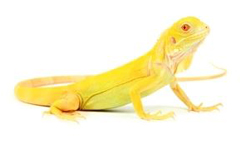
Diet: Iguanas are strict herbivores. Many older literatures will suggest feeding animal protein or even cat food. While some wild iguanas may ingest the occasional insect while eating leaves, it is not a significant portion on their diet. Iguanas that are fed too much animal protein will develop health problems and will die prematurely. A well balanced iguana diet will consist of about 40% to 45% greens (this includes, but is not limited to collard greens, turnip greens, mustard greens, dandelion greens (with flowers), escarole, and/or water cress), 40% to 45% other vegetables (this includes but is not limited to green beans, orange-fleshed squashes (butternut, Kabocha), snap or snow peas, parsnip, asparagus, okra, alfalfa (mature, not sprouts), onions, mushrooms, bell peppers, sweet potato, zucchini, yellow squash, and/or carrots), 10% or less of fruits (including, but not limited to Figs (raw or dried), blackberries, strawberries, raspberries, grapes, mango, melon (cantaloupe, honeydew, watermelon), papaya, banana, and/or apple), and less than 5% of other grains or commercial diets. Iguanas should never be rhubarb as it is toxic. Certain lettuces such as iceberg, romaine, and Boston butter lack sufficient nutrients and should only be fed occasionally. Acidic fruits (citrus, tomatoes, kiwi, pineapples, etc.) should also be only fed occasionally as well. Tofu can be occasionally offered as well for supplemental protein, though if too much is given it can lead to long term health issues. Wild plants and flowers are not recommended since they may be toxic to your iguana or may contain pesticides that could be toxic as well.
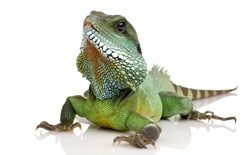
Maintenance: Cleanliness of the enclosure is essential. Waste products should be removed daily and the enclosure should be thoroughly cleaned and disinfected regularly. A 5% bleach solution provides an excellent disinfectant. Be sure to thoroughly rinse the solution from the enclosure before placing the iguana back in. Fresh water should also be offered at all times. Always wash your hands after handling your iguana or any of your iguana\'s cage accessories.